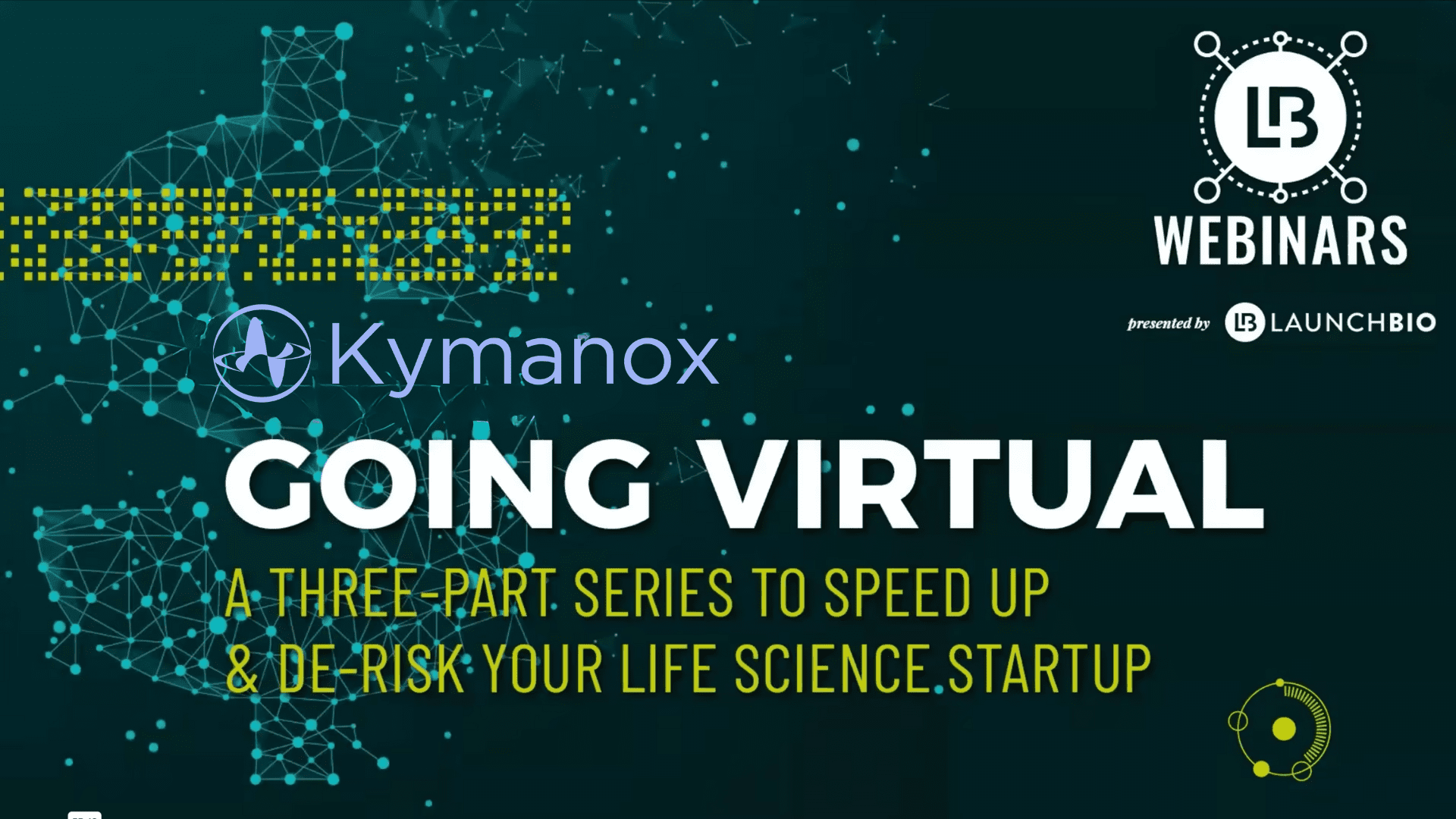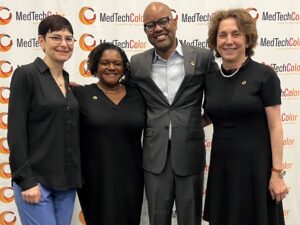
How Going Virtual in Life Sciences Can Attract Investors and Limit Risk
With nimbleness and innovation, the hyper-virtual business model can be highly attractive to venture capitalists. In a recent three-part series called “Going Virtual” Launch Bio and Kymanox outlined the many benefits of this model for life science startups, including speed to market, de-risking growth and creating stability.
By Alex Keown | May 13, 2024
| BioBuzz has been connecting the life science workforce since 2009. We’ve built an expansive community in the Mid-Atlantic with a national readership that spans from Massachusettes to Florida, and New York to California. For our next chapter, we’re building a proprietary talent logistics model to help employers source and hire life science talent. Learn more. |
The concept of a hyper-virtual company is a paradigm shift in innovation, so says Stephen Perry, chief executive officer of North Carolina-based Kymanox Corporation.
The third installment of this series wrapped up this month in a session that covered a venture capitalist’s perspective on the virtual model, how to create a development plan with targeted milestones as well as company valuation and developing a capital strategy.
Speakers included:
- Stephen M Perry, CEO, Kymanox (discussion leader)
- Rick Bente, MBA, Co-Founder & CEO, Indomo
- Chris Garabedian, CEO, Xontongeny
“Hyper-virtual allows companies to be speedy and eliminates risk in an uncertain world,” Perry said. He added that a hyper-virtual concept is efficient and allows leadership to “maximize the ideas of a lean operation” and minimize costs.
For startup life sciences organizations, maintaining costs is crucial, particularly as they aim to achieve any milestones and attract potential investor capital. When facing difficult funding headwinds due to changing climates, startups are looking at various options to maintain their cash runway, including a virtual or hyper-virtual business model. This approach, which includes outsourcing some operations, provides additional opportunities to de-risk operations, as well as assets.
A successful virtual approach requires strategic thinking and diligence from company leadership, especially when it comes to the need for capital. Working with LaunchBio, a nonprofit organization that supports high-growth, high-impact life science and biotechnology companies, Perry led a series of three roundtable discussions highlighting the virtues of a hyper-virtual business model in the life sciences. The latest discussion, “Positioning for Success: Attracting Investors with the Virtual Model” focused on best practices to attract venture capital investors, particularly in a market that has seen a thawing of funds following several months of limited investments across the sector.
Over the past 10 years, life sciences consulting company Kymanox Corporation, based in Research Triangle Park, has supported companies within the hyper-virtual space. The company created what Perry called an “open source model” for the sector and why it might be the right business model for startups and early-stage companies. The hyper-virtual approach tackles speed to market and the reduction of risk associated with business translation.
“It allows companies to be nimble and limits risk in this uncertain world… and creates stability and gives you options,” Perry said.
Benefits of Hyper-virtual
In the wake of the COVID-19 pandemic, the idea of a virtual company is fairly familiar to most people. A hyper-virtual company may be a less familiar concept. Virtual companies often have origins as startups in basements or someone’s garage. But, they don’t stay virtual for long. As soon as these companies secure sufficient funding, they begin to scale their teams and suppliers, Perry said.
In contrast, hyper-virtual companies maintain the nimbleness of startups and augment the tools that have made them successful, Perry continued. The framework for hyper-virtual companies is a systematic approach to working with a handful of supplier partners and relying on their expertise to effectively and efficiently complete the work. Hyper-virtual companies tend to employ less than 10 people and work with less than 10 outsourced partners, such as research labs and contract development management companies. The model allows the company to deliver a commercial product while enabling the team to remain intact, Perry said.
The hyper-virtual concept also keeps communication channels within a manageable number. The fewer communications you have to manage makes things easier, Perry said. For hyper-local companies, it’s important to establish effective and cohesive communications between supply partners. That limits any delays to objectives and can also save a significant amount of money. Mathematically, those communication channels can explode when your company increases in headcount and number of suppliers, Perry said. It also helps keep costs under control and allows for strategic allocations of financing, which has taken on increased importance due to the recent slowdown of venture capital investments in the life sciences industry.
Investors and Hyper-virtual
Perry described the slowdown of venture capital over the past year as a “nightmare”. He noted that Kymanox, backed by private equity, saw eight straight quarters of reduced investments. However, over the past few months, venture capitalists have begun to loosen the strings of their purses and make big investments again. And that has Perry excited for the industry.
“I’m someone who roots for the industry,” he said. “I’m someone who is just rooting for life science to save my life and my family’s lives.”
Chris Garabedian, chairman and CEO of life sciences accelerator Xontogeny, confirmed a thawing of investment capital. He said there are signs of a return of the mega-funding round for Series A investments. He pointed to several recent raises that provided hundreds of millions of dollars to individual companies, such as Enlaza Therapeutics and Reunion Neuroscience. Garabedian said investment firms are at a point where “they need to put their money to work.” He added that venture funds are looking to back companies with leaner models and smaller teams, as well as a proven management team.
Rick Bente, CEO and co-founder at Indomo, a Boston-based company developing device-enabled therapeutics, added they are seeing an “uptick” in follow-on rounds as well. However, he noted that funds for those Series B and C rounds remain tighter than they have been in recent years.
Garabedian also noted that when venture firms are doing their due diligence before backing early-stage companies, they want to make sure intellectual property is “locked down.” No investment group wants to back the development of a new therapeutic only to have another company come in and challenge the IP at the last minute.
“It’s just not worth the risk,” he said.
Company culture in the hyper-virtual model is not difficult to maintain, Bente said. If leaders are intentional about their company culture, it can become firmly engrained in the fabric of the company.
“With hyper-virtual, the number of employees is small, so it’s an easier process. You’re going to be talking with those people multiple times per day,” Bente said.
Perry said Kymanox tries to strengthen its culture through some in-person events, such as gatherings at a place like TopGolf. He said it’s important to be mindful of creating inclusive activities when holding in-person events.
“Those times are relaxing and a lot of fun,” he said.







